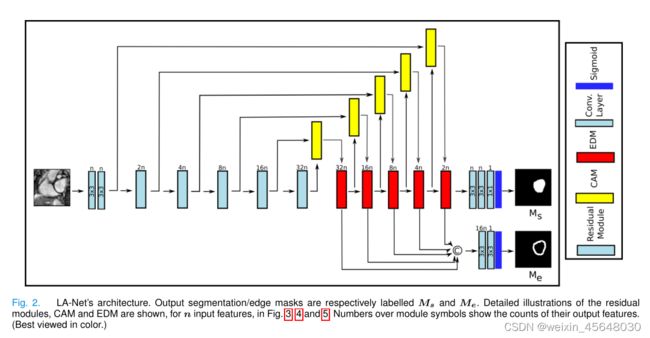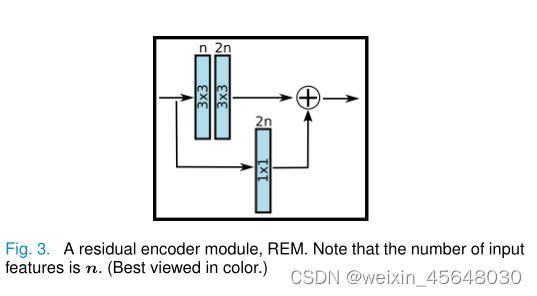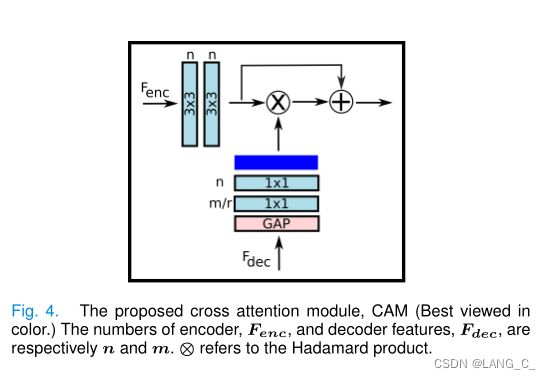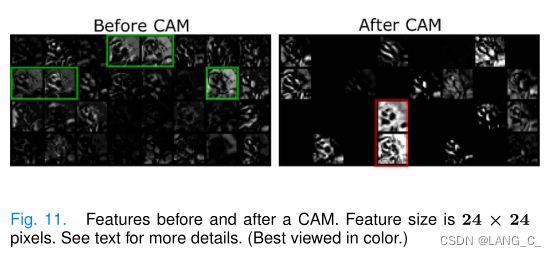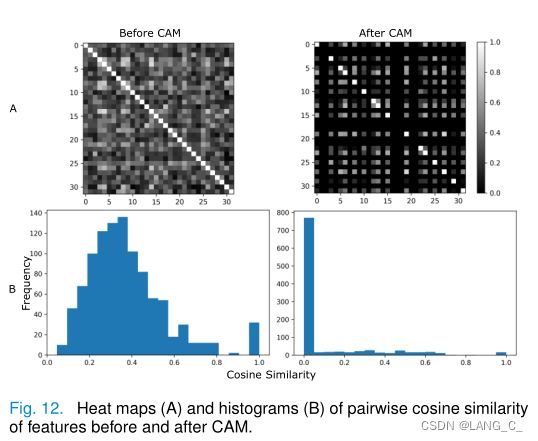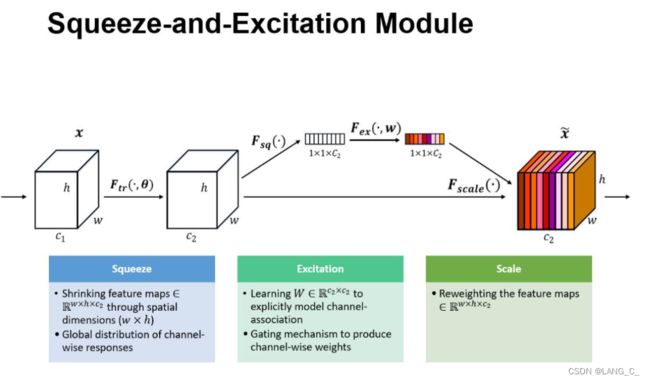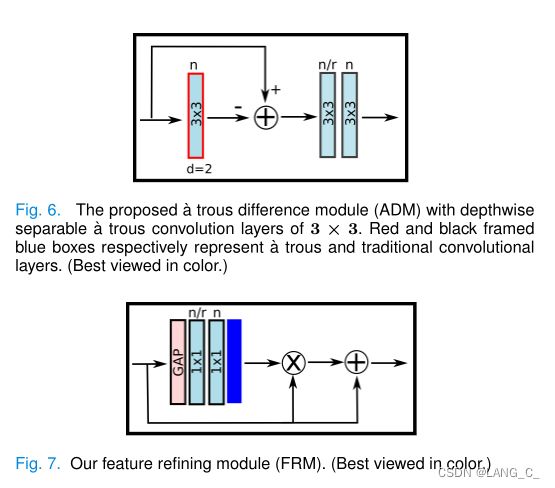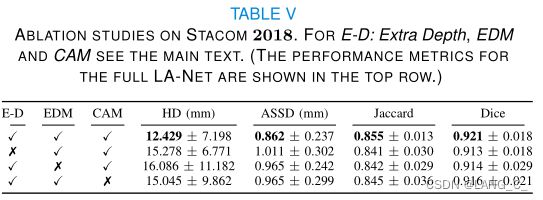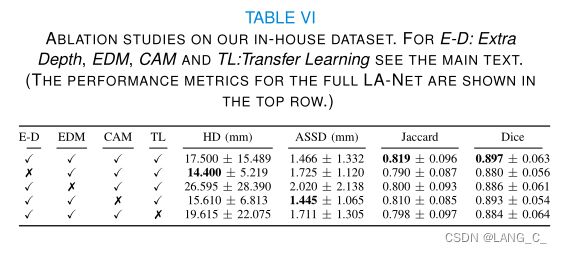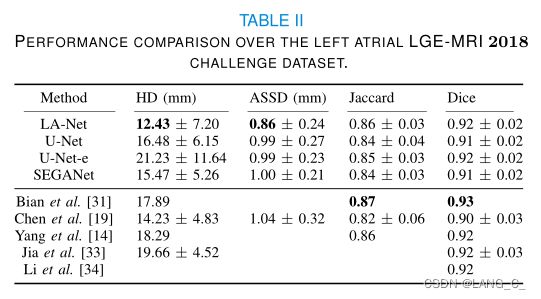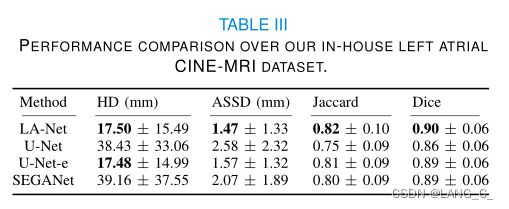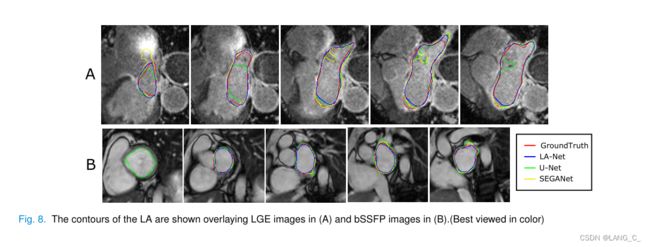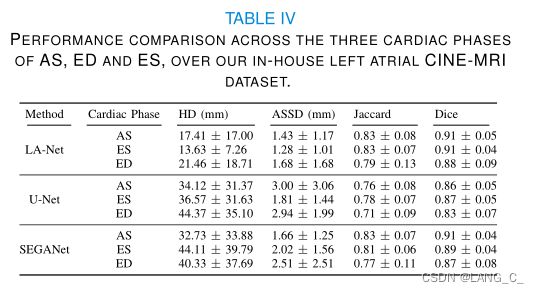- 基于YOLOv8的Web端交互式目标检测系统设计与实现
YOLO实战营
YOLO前端目标检测人工智能ui目标跟踪计算机视觉
1.引言目标检测是计算机视觉领域的一项重要任务,它在安防监控、自动驾驶、医疗影像分析等领域有着广泛的应用。近年来,随着深度学习技术的快速发展,YOLO(YouOnlyLookOnce)系列算法因其出色的速度和精度平衡而备受关注。本文将详细介绍如何基于最新的YOLOv8模型构建一个Web端交互式目标检测系统,包含完整的UI界面设计和数据集处理流程。本系统将实现以下功能:基于YOLOv8的高效目标检测
- 交错并联Buck+LLC变换器的建模与控制优化研究
交错并联Buck+LLC变换器的建模与控制优化研究前些天发现了一个巨牛的人工智能学习网站,通俗易懂,风趣幽默,忍不住分享一下给大家,觉得好请收藏。点击跳转到网站。摘要本文针对宽输入电压范围(200-450V)、多电压输出(12-48V)的高效DC-DC变换系统,提出了一种基于交错并联Buck预调节器和LLC谐振变换器的两级式拓扑结构。中间母线电压设定为200V,系统输出功率为1500W,要求电压和
- 基于卷积神经网络与小波变换的医学图像超分辨率算法复现
神经网络15044
python算法cnn算法人工智能图像处理开发语言神经网络深度学习
基于卷积神经网络与小波变换的医学图像超分辨率算法复现前些天发现了一个巨牛的人工智能学习网站,通俗易懂,风趣幽默,忍不住分享一下给大家,觉得好请收藏。点击跳转到网站。1.引言医学图像超分辨率技术在临床诊断和治疗规划中具有重要意义。高分辨率的医学图像能够提供更丰富的细节信息,帮助医生做出更准确的诊断。近年来,深度学习技术在图像超分辨率领域取得了显著进展。本文将复现一种结合卷积神经网络(CNN)、小波变
- 使用MMDetection中的Mask2Former和X-Decoder训练自定义数据集及结果复现
神经网络15044
算法python分类矩阵人工智能数据挖掘深度学习
使用MMDetection中的Mask2Former和X-Decoder训练自定义数据集及结果复现前些天发现了一个巨牛的人工智能学习网站,通俗易懂,风趣幽默,忍不住分享一下给大家,觉得好请收藏。点击跳转到网站。1.引言1.1研究背景实例分割是计算机视觉领域的重要任务,它要求模型不仅要检测图像中的对象,还要精确地分割出每个对象的像素级掩码。近年来,基于Transformer的模型在实例分割任务上取得
- 2023-08-03
yM_aad9
神经是一种社会资源!只要能和别的神经互动就行了!社会性的驯化离不开神经网络人与人之间的合作只能依赖感性理性心理生理事理物理跟蠢人谈情说爱免不了虚情假意它们最爱空头支票如果兑现不了那一定是别人欺骗了它!而不是自欺欺人的本能自欺欺人最容易受人欺骗最要命的是还持有了资料官有什么可怕?可怕的是贼呀!官可能互相约束贼只能互相伤害如果没有互相?那只有相护了!傻子坏人坏事见得少不知道什么叫坏处孬子好人好事见得少
- OpenCV引擎:驱动实时应用开发的科技狂飙
芯作者
DD:计算机科学领域opencv计算机视觉
在人工智能与计算机视觉技术迅猛发展的今天,实时图像处理已成为工业自动化、自动驾驶、医疗诊断、增强现实等领域的核心技术需求。而**OpenCV(OpenSourceComputerVisionLibrary)**作为全球最活跃的开源计算机视觉库,正以其强大的算法生态、跨平台兼容性以及持续进化的架构设计,成为驱动实时应用开发的“数字引擎”。本文将深入剖析OpenCV如何通过技术创新突破实时处理的性能极
- 深度学习系列----->环境搭建(Ubuntu)
二师兄用飘柔
深度学习历程深度学习ubuntu人工智能pytorchpython
1、前言电脑基础系统硬件情况:系统:ubuntu18.04、显卡:GTX1050Ti;后续的环境搭建都在此基础上进行。此次学习选择Pytorch作为深度学习的框架,选择的原因主要由于PyTorch在研究领域特别受欢迎,较多的论文框架也是基于其开发。2、anaconda+python3安装测试在学习深度学习的过程中会涉及到使用不同版本python包的问题,而anaconda可以便捷获取包且对包能够进
- 深度学习-常用环境配置
瑶山
AIlinux人工智能windowsCUDAPyTorch
目录Miniconda安装安装NVIDIA显卡驱动安装CUDA和cnDNNCUDAcuDNNPyTorch安装手动下载测试Miniconda安装最新版Miniconda搭建Python环境_miniconda创建python虚拟环境-CSDN博客安装NVIDIA显卡驱动直接进NVIDIA官网:NVIDIAGeForce驱动程序-N卡驱动|NVIDIA在这里有GeForce驱动程序,立即下载,这是下
- 全球软件技术峰会 2025:聚焦大模型开发、智能运维与架构创新,共赴技术实战盛宴
向日葵也有悲伤
运维架构推荐算法数据结构大数据数据库架构
全球软件技术峰会2025:聚焦大模型开发、智能运维与架构创新,共赴技术实战盛宴在软件定义未来的时代,人工智能与数字化技术正以颠覆性力量重塑全球产业格局。2025年8月15-16日,以"全球专家、卓越智慧"为宗旨的全球软件技术峰会将盛大启幕,特邀全球近50位来自微软、谷歌、亚马逊、字节跳动等企业的技术领袖及一线实战专家,围绕大模型智能应用开发、AI与ML智能运维、软件开发智能化、架构设计与演进四大核
- AI产品经理面试宝典第42天:学习方法与产品流程解析
TGITCIC
AI产品经理一线大厂面试题产品经理AI面试大模型面试AI产品经理面试大模型产品经理面试AI产品大模型产品
具体问答:学习产品及AI知识的方法问:请谈谈您是如何学习产品及AI知识的,以及您认为哪些资源对您帮助最大答:我的学习体系包含三个维度:分层知识架构、实践验证闭环、资源筛选机制。在知识获取阶段,采用「理论-案例-工具」三级学习法:通过《人工智能:一种现代的方法》构建AI基础框架,用TensorFlow官方文档掌握工程实现,结合《启示录》《俞军产品方法论》理解产品逻辑。实践环节采用「项目反哺」模式,例
- 重磅!LM Studio AI编程全面免费
从今天起,LMStudio在家和工作中均可免费使用。查看更新后的条款了解详情。我们的隐私政策保持不变,您可以在此处阅读。在家免费使用,现在也可在工作场所使用LMStudio一直以来都免费供个人使用。这源于我们秉持的根本信念:人工智能应该让人们在自己的机器上轻松访问,无需依赖任何外部资源,并且完全保护隐私。此前,LMStudio应用条款规定,公司或组织若要使用LMStudio,必须联系我们并获得单独
- 在NLP深层语义分析中,深度学习和机器学习的区别与联系
在自然语言处理(NLP)的深层语义分析任务中,深度学习与机器学习的区别和联系主要体现在以下方面:一、核心区别特征提取方式机器学习:依赖人工设计特征(如词频、句法规则、TF-IDF等),需要领域专家对文本进行结构化处理。例如,传统情感分析需人工定义“情感词库”或通过词性标注提取关键成分。深度学习:通过神经网络自动学习多层次特征。例如,BERT等模型可从原始文本中捕获词向量、句法关系甚至篇章级语义,无
- 深度学习--利用梯度下降法进行多变量的二分类(感知机)
白话学生nit
深度学习分类人工智能
其实这一节涉及到了感知机的相关知识,就把这一节当作是学习感知机的引子吧。什么是二分类我们先来说一下什么是二分类,二分类指的是将结果分为两个互斥的类别,通常用来表示问题的两种可能。为什么用感知机学习二分类常见的解决问题的模型有很多,这里我们使用感知机模型。至于为什么,因为感知机模型很多地方用起来比较简便,就拿我们这一节的问题举一下例子,我们需要依照房子的价格对房子进行分类。在感知机模型中,我们可以使
- Self-Consistency:跨学科一致性的理论与AI推理的可靠性基石
大千AI助手
人工智能Python#Prompt人工智能机器学习神经网络算法大模型幻觉LLM
本文综合其在逻辑学、心理学及人工智能领域的核心定义、技术实现与前沿进展来对Self-Consistency(自洽性)进行系统性解析。本文由「大千AI助手」原创发布,专注用真话讲AI,回归技术本质。拒绝神话或妖魔化。搜索「大千AI助手」关注我,一起撕掉过度包装,学习真实的AI技术!一、核心定义与跨学科内涵基础概念逻辑学定义:指理论或系统内部逻辑自洽,无矛盾或悖论。例如物理理论中,狭义相对论的速度变换
- 人工智能学习指南:从菜鸟到大神的进击之路
橡晟
人工智能深度学习计算机视觉算法学习python
人工智能学习指南:从菜鸟到大神的进击之路前言:别慌,AI没那么可怕嘿!想学人工智能?恭喜你,你已经比90%的人更有眼光了!很多人一听到"人工智能"就开始头疼,仿佛这是什么高深莫测的巫术。其实不然,AI就像学做饭一样——刚开始可能会糊锅,但掌握了方法,你也能做出一桌好菜!目录第一章:认清现实,别被忽悠第二章:建立知识地图第三章:实战为王第四章:自检清单——你真的学会了吗?第五章:进阶之路结语:成为A
- 阴谋爆仓!社科院课堂朱民ST-balance节能风电被骗揭秘!受害者亲述不能出金真相!
正义青天
随着互联网的普及,数字经济蓬勃发展,各种线上平台如雨后春笋般涌现。然而,在这些看似繁荣的平台中,不乏一些黑平台,它们以欺诈手段骗取用户的财产,给人们的财产安全带来严重威胁。因此,我们有必要提高警惕,防范黑平台诈骗。针对网上素未谋面的牛散大咖,经济学家等推荐网上投资理财、数字经济,数字体育市场,人工智能项目,数字低碳,慈善投票网站买数字的等等都是骗局若你也不幸被骗遇到此类平台一定不要打草惊蛇,早期不
- 智能喷洒机器人目标识别系统:基于NanoDet的目标检测与UI界面实现
YOLO实战营
机器人目标检测uiNanoDet计算机视觉目标跟踪深度学习
在现代农业生产中,自动化喷洒系统是实现精准农业的重要组成部分。智能喷洒机器人通过图像识别和自动控制技术,能够高效识别并精确喷洒农药、肥料等,提高农业生产效率,降低化学品使用量,减少环境污染。目标识别是智能喷洒机器人中至关重要的部分,它涉及到精准的作物和病虫害识别,确保喷洒操作的准确性。在本篇博客中,我们将构建一个基于NanoDet深度学习目标检测模型的智能喷洒机器人目标识别系统。我们将介绍如何使用
- 人工神经网络的拓扑结构,神经网络的神经元结构
快乐的小蓝猫
神经网络深度学习人工智能rnn
bp神经网络BP(BackPropagation)网络是1986年由Rumelhart和McCelland为首的科学家小组提出,是一种按误差逆传播算法训练的多层前馈网络,是目前应用最广泛的神经网络模型之一。BP网络能学习和存贮大量的输入-输出模式映射关系,而无需事前揭示描述这种映射关系的数学方程。它的学习规则是使用最速下降法,通过反向传播来不断调整网络的权值和阈值,使网络的误差平方和最小。BP神经
- Deepoc大模型重构核工业智能基座:混合增强架构与安全增强决策技术
Deepoch
人工智能创业创新科技自动化学习
面向复杂系统的高可靠AI赋能体系构建Deepoc大模型通过多维度技术突破,显著提升核工业知识处理与决策可靠性。经核能行业验证,其生成内容可验证性提升68%,关键参数失真率99.999%)。动态可信度评估系统:基于贝叶斯神经网络实时量化模型不确定性,为关键决策提供置信度评分(如堆芯功率控制置信区间±0.05%)。二、核心突破:物理增强型智能算法创新机理与数据双驱动建模神经微分方程求解器:将中子输运方
- 对标ChatGPT,「文心一言」今日亮相!AI人机时代来临,未来在何方?
AI医学
本文由「AI医学er」提供医海无涯,AI同舟。关注我们,助力高效科研。3月15日,OpenAI公布了其大型语言模型的最新版本——GPT-4。3月16日,百度文心一言人工智能聊天机器人正式上线。一个时代开始了。OpenAI在官网表示,GPT-4是一个能接受图像和文本输入,并输出文本的多模态模型,是OpenAI在扩展深度学习方面的最新成果。此前的ChatGPT,只能通过向其输入文字提问才能生成文字回答
- 【深度学习新浪潮】什么是system 1和system 2?
小米玄戒Andrew
深度学习新浪潮深度学习人工智能大模型推理模型COT模型蒸馏动态推理
在大模型研究中,System1和System2的概念源于心理学家DanielKahneman的双系统理论,用于描述人类思维的两种模式。System1代表快速、直觉、自动化的思维(如模式识别),而System2代表慢速、有意识、需要努力的逻辑推理(如复杂数学计算)。这一理论被引入AI领域后,成为理解大模型能力边界和优化方向的重要框架。一、大模型中的System1与System2的定义System1(
- 飞算科技:以原创技术为翼,赋能产业数字化转型
在数字经济浪潮席卷全球的当下,一批专注于技术创新的中国企业正加速崛起,飞算数智科技(深圳)有限公司(简称“飞算科技”)便是其中的佼佼者。作为一家国家级高新技术企业,飞算科技以自主创新为核心驱动力,凭借互联网科技、大数据、人工智能等前沿技术,为各行业客户插上数字化转型的翅膀。飞算科技的定位清晰而坚定——自主创新型数字科技公司。这一定位不仅体现在其技术研发的方向上,更融入到为客户服务的每一个环节。无论
- 警惕!北恒私募高级班周一丰,马建军不正规。不让出金,不能提现,大家远离骗局!
昌龙律法
随着互联网的普及,数字经济蓬勃发展,各种线上平台如雨后春笋般涌现。然而,在这些看似繁荣的平台中,不乏一些黑平台,它们以欺诈手段骗取用户的财产,给人们的财产安全带来严重威胁。因此,我们有必要提高警惕,防范黑平台诈骗。针对网上素未谋面的牛散大咖,经济学家等推荐网上投资理财、数字经济,数字体育市场,人工智能项目,数字低碳,慈善投票网站买数字的等等都是骗局,广大市民对此要提高警惕,若你也不幸被骗遇到此类平
- 学习人工智能开发的详细指南
Ws_
学习人工智能python
一、引言人工智能(AI)开发是一个充满挑战与机遇的领域,它融合了数学、计算机科学、统计学、认知科学等多个学科的知识。随着大数据、云计算和深度学习技术的快速发展,AI已经成为推动社会进步和产业升级的关键力量。本文将为初学者提供一份详细的学习指南,帮助大家逐步掌握AI开发的核心技能。二、基础知识准备数学基础:线性代数:理解向量、矩阵、线性变换等基本概念,掌握矩阵运算和特征值分解等技巧。概率论与统计学:
- 计算机发展史:人工智能时代的智能变革与无限可能
jdlxx_dongfangxing
计算机发展史计算机发展史
在计算机发展的漫长进程中,人工智能时代的到来无疑是最具革命性的篇章之一。它使计算机从单纯的数据处理工具,进化为能够模拟、延伸和拓展人类智能的强大系统,对科学研究、经济发展、社会生活乃至人类文明的走向,都产生了深远且不可逆转的影响。从早期对智能机器的设想,到如今人工智能技术在全球范围内的广泛应用,这一领域经历了无数次理论突破、技术迭代与实践探索,正以前所未有的速度重塑着我们的世界。人工智能的起源与早
- 走进区块城市,开启你的元宇宙之旅!
口碑信息传播者
随着科技的飞速发展,虚拟现实、区块链、人工智能等前沿技术逐渐融入我们的生活。在这个大背景下,元宇宙概念应运而生,成为全球关注的焦点。本文将带领读者走进区块城市,一探元宇宙的究竟,感受这个未来世界的魅力。探索未来,触碰无限可能!国内区块链元宇宙正引领一场前所未有的科技革命,现在正是您加入这场盛宴的最佳时机!在这里,您将亲身体验到一个全新的虚拟世界,感受与现实世界无缝对接的震撼体验。加入国内区块链元宇
- AI人工智能领域知识图谱在文本分类中的应用技巧
AI天才研究院
AI大模型企业级应用开发实战人工智能知识图谱分类ai
AI人工智能领域知识图谱在文本分类中的应用技巧关键词:知识图谱、文本分类、图神经网络、实体关系抽取、深度学习、自然语言处理、特征融合摘要:本文深入探讨了知识图谱在文本分类任务中的应用技巧。我们将从知识图谱的基本概念出发,详细分析如何将结构化知识融入传统文本分类流程,介绍最新的图神经网络方法,并通过实际案例展示知识增强型文本分类系统的构建过程。文章特别关注知识表示学习与文本特征的融合策略,以及在不同
- 大学专业科普 | 人工智能、物联网和云计算技术
鸭鸭鸭进京赶烤
人工智能物联网云计算5G信号处理信息与通信网络
一、专业概述人工智能专业是一门融合计算机科学、数学、信息学等多学科知识的交叉学科。它旨在培养学生掌握人工智能领域的基本理论、方法和技能,以应对人工智能在各个领域的应用需求和发展挑战。二、主要课程基础课程:包括高等数学、线性代数、概率论与数理统计、离散数学等数学基础课程,为人工智能算法提供理论支撑;以及数据结构、算法设计与分析、计算机组成原理、操作系统、计算机网络等计算机科学基础课程,帮助学生理解人
- 解读一个大学专业——信号与图像处理
专业定义与核心内容维度内容定义研究如何采集、处理、分析和理解一维信号(语音、雷达、脑电)和二维/三维图像(医学、遥感、工业视觉)。关键词数字信号处理(DSP)、图像处理、计算机视觉、模式识别、压缩感知、深度学习、GPU加速、嵌入式系统。技术栈MATLAB/Python+OpenCV/PyTorch+DSP/FPGA+GPU(CUDA)第五届先进算法与信号、图像处理国际学术会议(AASIP2025)
- Pad Token技术原理与实现指南
Takoony
AI
目录概述理论基础:第一性原理分析技术实现机制工程最佳实践性能优化策略常见问题与解决方案技术发展趋势附录1.概述1.1文档目的本文档旨在深入阐述深度学习中PadToken的技术原理、实现机制及工程应用,为算法工程师提供全面的理论指导和实践参考。1.2适用范围自然语言处理模型开发序列数据批处理优化深度学习系统架构设计高性能计算资源管理1.3核心问题研究问题:为什么深度学习模型需要将变长序列统一到固定长
- springmvc 下 freemarker页面枚举的遍历输出
杨白白
enumfreemarker
spring mvc freemarker 中遍历枚举
1枚举类型有一个本地方法叫values(),这个方法可以直接返回枚举数组。所以可以利用这个遍历。
enum
public enum BooleanEnum {
TRUE(Boolean.TRUE, "是"), FALSE(Boolean.FALSE, "否");
- 实习简要总结
byalias
工作
来白虹不知不觉中已经一个多月了,因为项目还在需求分析及项目架构阶段,自己在这段
时间都是在学习相关技术知识,现在对这段时间的工作及学习情况做一个总结:
(1)工作技能方面
大体分为两个阶段,Java Web 基础阶段和Java EE阶段
1)Java Web阶段
在这个阶段,自己主要着重学习了 JSP, Servlet, JDBC, MySQL,这些知识的核心点都过
了一遍,也
- Quartz——DateIntervalTrigger触发器
eksliang
quartz
转载请出自出处:http://eksliang.iteye.com/blog/2208559 一.概述
simpleTrigger 内部实现机制是通过计算间隔时间来计算下次的执行时间,这就导致他有不适合调度的定时任务。例如我们想每天的 1:00AM 执行任务,如果使用 SimpleTrigger,间隔时间就是一天。注意这里就会有一个问题,即当有 misfired 的任务并且恢复执行时,该执行时间
- Unix快捷键
18289753290
unixUnix;快捷键;
复制,删除,粘贴:
dd:删除光标所在的行 &nbs
- 获取Android设备屏幕的相关参数
酷的飞上天空
android
包含屏幕的分辨率 以及 屏幕宽度的最大dp 高度最大dp
TextView text = (TextView)findViewById(R.id.text);
DisplayMetrics dm = new DisplayMetrics();
text.append("getResources().ge
- 要做物联网?先保护好你的数据
蓝儿唯美
数据
根据Beecham Research的说法,那些在行业中希望利用物联网的关键领域需要提供更好的安全性。
在Beecham的物联网安全威胁图谱上,展示了那些可能产生内外部攻击并且需要通过快速发展的物联网行业加以解决的关键领域。
Beecham Research的技术主管Jon Howes说:“之所以我们目前还没有看到与物联网相关的严重安全事件,是因为目前还没有在大型客户和企业应用中进行部署,也就
- Java取模(求余)运算
随便小屋
java
整数之间的取模求余运算很好求,但几乎没有遇到过对负数进行取模求余,直接看下面代码:
/**
*
* @author Logic
*
*/
public class Test {
public static void main(String[] args) {
// TODO A
- SQL注入介绍
aijuans
sql注入
二、SQL注入范例
这里我们根据用户登录页面
<form action="" > 用户名:<input type="text" name="username"><br/> 密 码:<input type="password" name="passwor
- 优雅代码风格
aoyouzi
代码
总结了几点关于优雅代码风格的描述:
代码简单:不隐藏设计者的意图,抽象干净利落,控制语句直截了当。
接口清晰:类型接口表现力直白,字面表达含义,API 相互呼应以增强可测试性。
依赖项少:依赖关系越少越好,依赖少证明内聚程度高,低耦合利于自动测试,便于重构。
没有重复:重复代码意味着某些概念或想法没有在代码中良好的体现,及时重构消除重复。
战术分层:代码分层清晰,隔离明确,
- 布尔数组
百合不是茶
java布尔数组
androi中提到了布尔数组;
布尔数组默认的是false, 并且只会打印false或者是true
布尔数组的例子; 根据字符数组创建布尔数组
char[] c = {'p','u','b','l','i','c'};
//根据字符数组的长度创建布尔数组的个数
boolean[] b = new bool
- web.xml之welcome-file-list、error-page
bijian1013
javaweb.xmlservleterror-page
welcome-file-list
1.定义:
<welcome-file-list>
<welcome-file>login.jsp</welcome>
</welcome-file-list>
2.作用:用来指定WEB应用首页名称。
error-page1.定义:
<error-page&g
- richfaces 4 fileUpload组件删除上传的文件
sunjing
clearRichfaces 4fileupload
页面代码
<h:form id="fileForm"> <rich:
- 技术文章备忘
bit1129
技术文章
Zookeeper
http://wenku.baidu.com/view/bab171ffaef8941ea76e05b8.html
http://wenku.baidu.com/link?url=8thAIwFTnPh2KL2b0p1V7XSgmF9ZEFgw4V_MkIpA9j8BX2rDQMPgK5l3wcs9oBTxeekOnm5P3BK8c6K2DWynq9nfUCkRlTt9uV
- org.hibernate.hql.ast.QuerySyntaxException: unexpected token: on near line 1解决方案
白糖_
Hibernate
文章摘自:http://blog.csdn.net/yangwawa19870921/article/details/7553181
在编写HQL时,可能会出现这种代码:
select a.name,b.age from TableA a left join TableB b on a.id=b.id
如果这是HQL,那么这段代码就是错误的,因为HQL不支持
- sqlserver按照字段内容进行排序
bozch
按照内容排序
在做项目的时候,遇到了这样的一个需求:
从数据库中取出的数据集,首先要将某个数据或者多个数据按照地段内容放到前面显示,例如:从学生表中取出姓李的放到数据集的前面;
select * fro
- 编程珠玑-第一章-位图排序
bylijinnan
java编程珠玑
import java.io.BufferedWriter;
import java.io.File;
import java.io.FileWriter;
import java.io.IOException;
import java.io.Writer;
import java.util.Random;
public class BitMapSearch {
- Java关于==和equals
chenbowen00
java
关于==和equals概念其实很简单,一个是比较内存地址是否相同,一个比较的是值内容是否相同。虽然理解上不难,但是有时存在一些理解误区,如下情况:
1、
String a = "aaa";
a=="aaa";
==> true
2、
new String("aaa")==new String("aaa
- [IT与资本]软件行业需对外界投资热情保持警惕
comsci
it
我还是那个看法,软件行业需要增强内生动力,尽量依靠自有资金和营业收入来进行经营,避免在资本市场上经受各种不同类型的风险,为企业自主研发核心技术和产品提供稳定,温和的外部环境...
如果我们在自己尚未掌握核心技术之前,企图依靠上市来筹集资金,然后使劲往某个领域砸钱,然
- oracle 数据块结构
daizj
oracle块数据块块结构行目录
oracle 数据块是数据库存储的最小单位,一般为操作系统块的N倍。其结构为:
块头--〉空行--〉数据,其实际为纵行结构。
块的标准大小由初始化参数DB_BLOCK_SIZE指定。具有标准大小的块称为标准块(Standard Block)。块的大小和标准块的大小不同的块叫非标准块(Nonstandard Block)。同一数据库中,Oracle9i及以上版本支持同一数据库中同时使用标
- github上一些觉得对自己工作有用的项目收集
dengkane
github
github上一些觉得对自己工作有用的项目收集
技能类
markdown语法中文说明
回到顶部
全文检索
elasticsearch
bigdesk elasticsearch管理插件
回到顶部
nosql
mapdb 支持亿级别map, list, 支持事务. 可考虑做为缓存使用
C
- 初二上学期难记单词二
dcj3sjt126com
englishword
dangerous 危险的
panda 熊猫
lion 狮子
elephant 象
monkey 猴子
tiger 老虎
deer 鹿
snake 蛇
rabbit 兔子
duck 鸭
horse 马
forest 森林
fall 跌倒;落下
climb 爬;攀登
finish 完成;结束
cinema 电影院;电影
seafood 海鲜;海产食品
bank 银行
- 8、mysql外键(FOREIGN KEY)的简单使用
dcj3sjt126com
mysql
一、基本概念
1、MySQL中“键”和“索引”的定义相同,所以外键和主键一样也是索引的一种。不同的是MySQL会自动为所有表的主键进行索引,但是外键字段必须由用户进行明确的索引。用于外键关系的字段必须在所有的参照表中进行明确地索引,InnoDB不能自动地创建索引。
2、外键可以是一对一的,一个表的记录只能与另一个表的一条记录连接,或者是一对多的,一个表的记录与另一个表的多条记录连接。
3、如
- java循环标签 Foreach
shuizhaosi888
标签java循环foreach
1. 简单的for循环
public static void main(String[] args) {
for (int i = 1, y = i + 10; i < 5 && y < 12; i++, y = i * 2) {
System.err.println("i=" + i + " y="
- Spring Security(05)——异常信息本地化
234390216
exceptionSpring Security异常信息本地化
异常信息本地化
Spring Security支持将展现给终端用户看的异常信息本地化,这些信息包括认证失败、访问被拒绝等。而对于展现给开发者看的异常信息和日志信息(如配置错误)则是不能够进行本地化的,它们是以英文硬编码在Spring Security的代码中的。在Spring-Security-core-x
- DUBBO架构服务端告警Failed to send message Response
javamingtingzhao
架构DUBBO
废话不多说,警告日志如下,不知道有哪位遇到过,此异常在服务端抛出(服务器启动第一次运行会有这个警告),后续运行没问题,找了好久真心不知道哪里错了。
WARN 2015-07-18 22:31:15,272 com.alibaba.dubbo.remoting.transport.dispatcher.ChannelEventRunnable.run(84)
- JS中Date对象中几个用法
leeqq
JavaScriptDate最后一天
近来工作中遇到这样的两个需求
1. 给个Date对象,找出该时间所在月的第一天和最后一天
2. 给个Date对象,找出该时间所在周的第一天和最后一天
需求1中的找月第一天很简单,我记得api中有setDate方法可以使用
使用setDate方法前,先看看getDate
var date = new Date();
console.log(date);
// Sat J
- MFC中使用ado技术操作数据库
你不认识的休道人
sqlmfc
1.在stdafx.h中导入ado动态链接库
#import"C:\Program Files\Common Files\System\ado\msado15.dll" no_namespace rename("EOF","end")2.在CTestApp文件的InitInstance()函数中domodal之前写::CoIniti
- Android Studio加速
rensanning
android studio
Android Studio慢、吃内存!启动时后会立即通过Gradle来sync & build工程。
(1)设置Android Studio
a) 禁用插件
File -> Settings... Plugins 去掉一些没有用的插件。
比如:Git Integration、GitHub、Google Cloud Testing、Google Cloud
- 各数据库的批量Update操作
tomcat_oracle
javaoraclesqlmysqlsqlite
MyBatis的update元素的用法与insert元素基本相同,因此本篇不打算重复了。本篇仅记录批量update操作的
sql语句,懂得SQL语句,那么MyBatis部分的操作就简单了。 注意:下列批量更新语句都是作为一个事务整体执行,要不全部成功,要不全部回滚。
MSSQL的SQL语句
WITH R AS(
SELECT 'John' as name, 18 as
- html禁止清除input文本输入缓存
xp9802
input
多数浏览器默认会缓存input的值,只有使用ctl+F5强制刷新的才可以清除缓存记录。如果不想让浏览器缓存input的值,有2种方法:
方法一: 在不想使用缓存的input中添加 autocomplete="off"; eg: <input type="text" autocomplete="off" name
![]() https://blog.csdn.net/qq_25602729/article/details/93786222?ops_request_misc=%257B%2522request%255Fid%2522%253A%2522165405366516780366516495%2522%252C%2522scm%2522%253A%252220140713.130102334..%2522%257D&request_id=165405366516780366516495&biz_id=0&utm_medium=distribute.pc_search_result.none-task-blog-2~all~sobaiduend~default-1-93786222-null-null.142%5Ev11%5Econtrol,157%5Ev12%5Enew_style2&utm_term=Salient+object+detection+with+pyramid+attention+and+salient+edges&spm=1018.2226.3001.4187
https://blog.csdn.net/qq_25602729/article/details/93786222?ops_request_misc=%257B%2522request%255Fid%2522%253A%2522165405366516780366516495%2522%252C%2522scm%2522%253A%252220140713.130102334..%2522%257D&request_id=165405366516780366516495&biz_id=0&utm_medium=distribute.pc_search_result.none-task-blog-2~all~sobaiduend~default-1-93786222-null-null.142%5Ev11%5Econtrol,157%5Ev12%5Enew_style2&utm_term=Salient+object+detection+with+pyramid+attention+and+salient+edges&spm=1018.2226.3001.4187